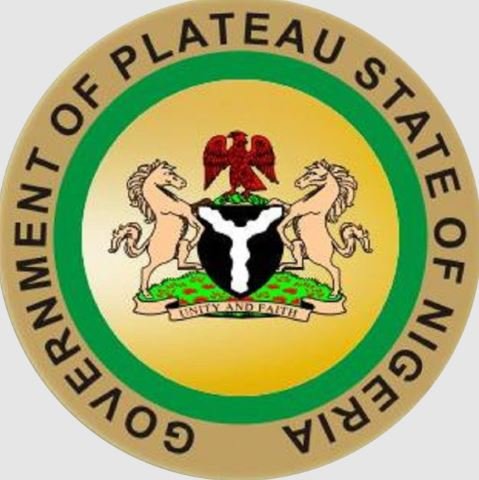The population projection of Plateau State in 2025 is approximately 5.07 million people. This is a growth of about 7.4% from the estimated population of 4.7 million in 2022. However, the growth rate is based on an annual increase of 2.4%, which has been consistent over the years.
This increase in population size shows the ongoing development and changes in the region, which has contributed to a larger and more diverse population in 2025.
READ ALSO: List Of LGAs In Benue State, Capital, And LGA Chairmen
How Has Plateau State’s Population Changed Over The Years?
Plateau State’s population has changed a lot over the years due to natural growth and economic factors. During the National Census In 1991, the population of Plateau State was recorded at 2,104,536.
And, by 2006, the population had grown to 3,206,531, which was an increase of 52.4% over from 1991. This represented an average annual growth rate of about 2.8%, which was slightly higher than the national average during that period.
In 2016, the National Population Commission estimated Plateau State’s population to be around 4,200,442. This continued growth showed an annual increase of 2.4%, which was steady compared to the earlier trend.
By 2022, projections showed that the population had reached about 4,717,300. Using the same growth rate of 2.4%, it is expected that the population will grow to approximately 5.07 million in 2025, which would represent an increase of about 7.4% from the 2022 projection.
The growth in Plateau State’s population also affects its population density. The state covers an area of 26,026 square kilometers. In 2022, the population density was about 181.3 people per square kilometer, and in 2025, this is expected to rise to 195 people per square kilometer.
However, natural growth plays a big part in the state’s growth, as birth rates have remained consistent, and better healthcare services have reduced infant mortality.
Migration has also contributed, with many people moving to Plateau State because of its rich agricultural land and opportunities in mining. Yet, internal conflicts have sometimes caused changes in population distribution within the state.
Economic development, including farming, tin mining, and tourism, has drawn people seeking work. Urban areas, like the city of Jos, have grown quickly as centers of commerce and education, driving population increases in the state.
READ ALSO: Complete List Of LGAs In Yobe State And Their Chairmen
Plateau State Population By Local Government
| No | Local Government Area | Population Estimation |
|---|---|---|
| 1 | Barkin Ladi | 264,500 |
| 2 | Bassa | 279,300 |
| 3 | Bokkos | 264,100 |
| 4 | Jos East | 129,900 |
| 5 | Jos North | 643,200 |
| 6 | Jos South | 458,100 |
| 7 | Kanam | 246,600 |
| 8 | Kanke | 182,800 |
| 9 | Langtang North | 209,400 |
| 10 | Langtang South | 154,700 |
| 11 | Mangu | 442,100 |
| 12 | Mikang | 141,800 |
| 13 | Pankshin | 279,700 |
| 14 | Qua'an Pan | 290,200 |
| 15 | Riyom | 193,900 |
| 16 | Shendam | 301,800 |
| 17 | Wase | 235,200 |
READ ALSO: Complete List Of LGAs In Kano State And Their Chairmen
The Demography Of Plateau State
Age
The age distribution in Plateau State shows a youthful population, with a major proportion under the age of 15.
| Age Group | Population Estimation |
|---|---|
| 0-14 years | 2,535,000 |
| 15-24 years | 1,015,000 |
| 25-54 years | 1,200,000 |
| 55 years and above | 320,000 |
Gender
| Gender | Population Estimation |
|---|---|
| Female | 2,540,000 |
| Male | 2,530,000 |
READ ALSO: List Of LGAs In Ogun State and Their Chairmen
Ethnic
Plateau State is home to a different ethnic group:
| Ethnic Group | Population Estimation |
|---|---|
| Berom | 800,000 |
| Ngas (Angas) | 600,000 |
| Afizere | 400,000 |
| Jarawa | 300,000 |
| Tarok | 250,000 |
| Hausa | 500,000 |
| Tiv | 300,000 |
| Other Ethnicities | 1,920,000 |
Religion
| Religion | Population Estimation |
|---|---|
| Christianity | 3,800,000 |
| Islam | 1,200,000 |
| Traditional Beliefs | 70,000 |
Educational Attainment
| Education Level | Population Estimation |
|---|---|
| No Formal Education | 1,500,000 |
| Primary Education | 1,800,000 |
| Secondary Education | 1,200,000 |
| Tertiary Education | 570,000 |
READ ALSO: Complete List Of LGAs In Borno State, Capital, And LGA Chairmen
Urban And Rural Population
| Area | Population Estimation |
|---|---|
| Urban | 2,753,016 |
| Rural | 2,316,984 |


Sir, the statistics you gave on estimated population of ethnic group in Plateau state is uncleared, particularly some major tribes like mwagavul and goemai, are not listed while least minority tribe like Tiv are estimated to have 300,000 population in the state. Please, re-check your statistical records and verify your claim.
I’ve carefully study the Plateau State population characterisitics and and really appreciate your effort in addressing a significant data gap that existed for years. I advise you provide a clear methodological pathways used in arriving at the weighty evidence. There is also need for list of literature your study relied upon. These will clear doubts about the sciencetifity and novel bases on the information you put in the public space.